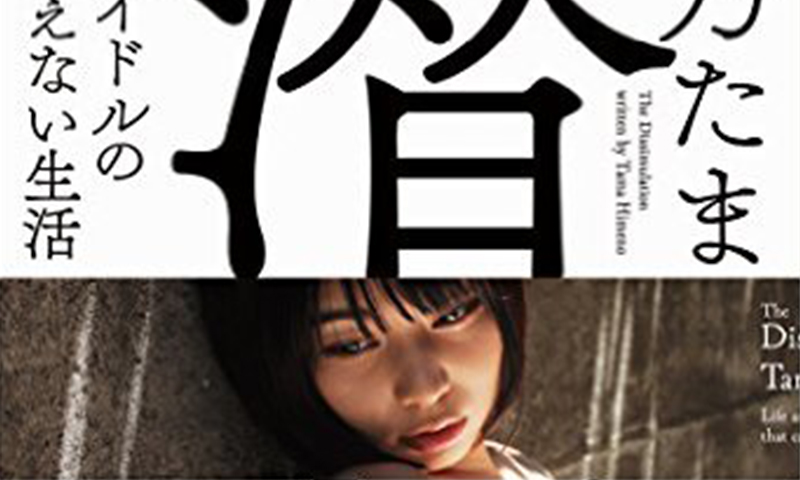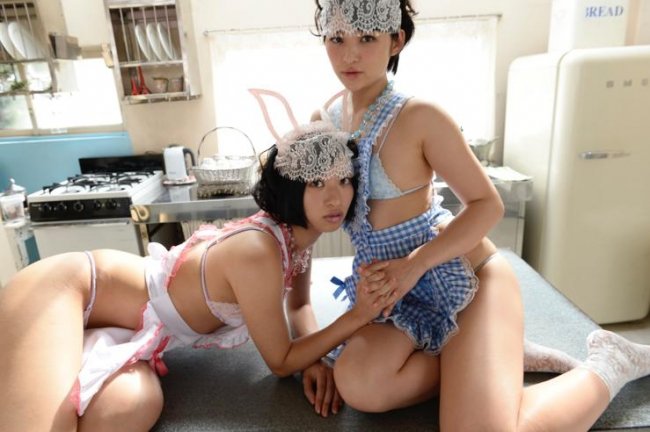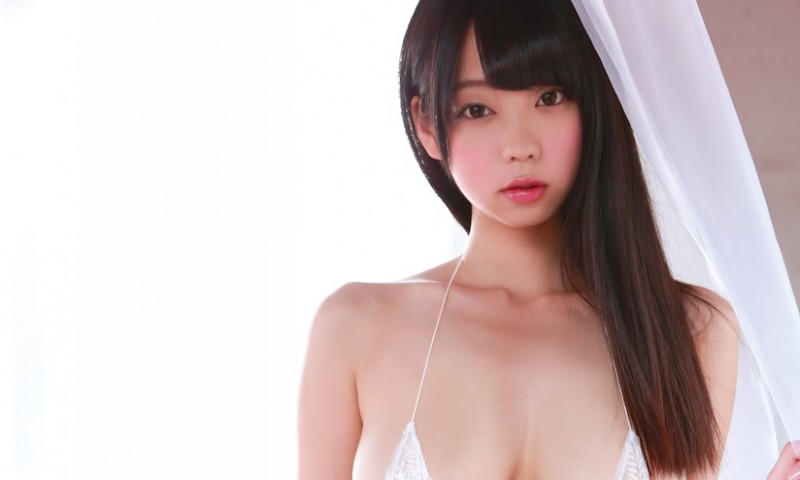
What is Gravure Idols? Photographic Expression by “Covering the Un-cute Parts of Girls”
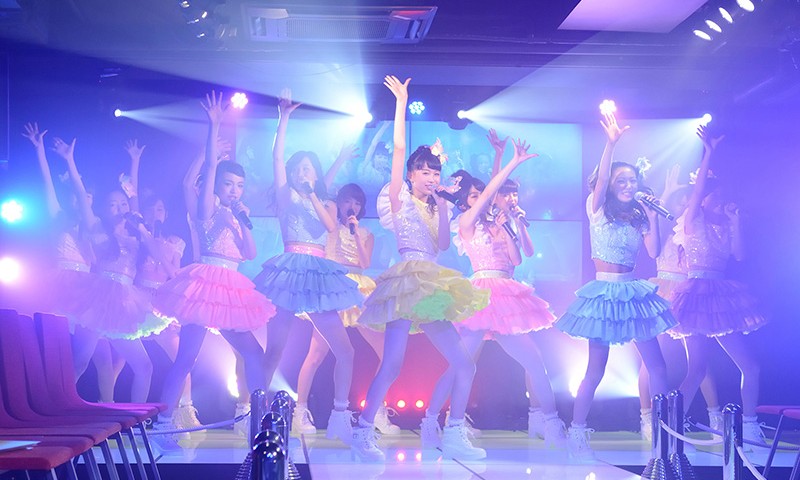

Hikaru Aoyama “Ai ni Kawarutoki…”/ Shining Star Entertainment
“Gravure idol” (Gradol for short) is a general term that mainly refers to the swimsuit-clad female idols and talents that appear in weekly magazines and comic magazines, as well on image DVDs. In our previous article on Gradols (http://tokyogirlsupdate.com/gravure-idols-part1-20151063255.html), we discussed “whether or not gradols exist overseas”, “the origin and history of gradols”, and “the uniqueness of gradol as a means of photographic expression”.
「グラビアアイドル(略称はグラドル)」とは、週刊誌やコミック雑誌のグラビアやイメージDVDなどに主に水着姿で出演する女性アイドル・タレントの総称を指す。この「グラドル」について、本稿の前編(http://tokyogirlsupdate.com/gravure-idols-part1-20151063255.html)では「海外にグラドルは存在するのか」「グラドルの発祥と歴史」「写真表現としてのグラドルの独自性」などについて考察した。
In this sequel, we’d like to consider “why gradols appear in swimsuits” or “the line that is beginning to blur between professional and amateur gradols”.
後編では、「グラドルが水着になる理由」「境界が曖昧化して行くグラドルのプロとアマチュア」などについて、考えて行きたい。
グラドルが水着になるのは何故か? プロモーションの場としてのグラビア
First of all, how did swimsuits become the standard image of gradols? Are there any benefits to gradols showing off their skin?
ところでそもそも、何故グラドルは水着姿になるのだろうか。グラドルにとって肌を露出するメリットはどこにあるのだろうか。
The most significant cause lies in the fact that magazine gravure is an extremely valid effectively platform for talent promotion. For magazines set out at convenience stores, several tens or hundreds of thousands of copies are displayed at bookstores and conveience stores all across the country. By making the cover of one of these magazines, they can reach the eyes of a much larger audience. This explains why appearing in gravure is not only for career gravure models, but something parallel to the live, dancing and singing idol, actress, and modeling industries. There are many who follow the pattern of making a gravure debut before moving into acting or singing.
最も大きな要因は、雑誌グラビアがタレントのプロモーションとして極めて有効な場である、という点にある。コンビニに置かれるような雑誌であれば、数万部、数十万部以上が全国の書店やコンビニに陳列されることになる。表紙も飾っていれば、より多くの人の目に触れることになるだろう。だからこそ、グラビア専門のアイドルだけでなく、歌って踊るライブアイドルや、女優、モデルらが、本業と並行してグラビアへ進出して行く。グラドルとしてデビューし、人気が出たところで女優や歌手へと移行するパターンも多い。
It makes me consider whether or not the word “gradol” is prone to being confused as a title or career name because of this situation. But how about if we try to perceive “gradol” as a label like that of being a Japanese talent (personality)? Rino Sashihara of AKB48, for example, is a dancing and singing “live idol”, who also appears on television as a “TV talent” and is also active as a “gradol”. We can give Rino Sashihara multiple labels to describe her work. For successful actressses and singers that have moved away from gravure work, by simply removing the “gradol” label, it seems easier to understand their work as a talent (personality).
このような状況から、「グラドル」という言葉を肩書きや職業名として認識すると混乱を招きやすいのではないか、と筆者は考えている。では、「グラドル」とはタレントの状態を示す「タグ」であると捉えてみるのはどうだろうか?例えばAKB48の指原莉乃は歌って踊る「ライブアイドル」であり、テレビで活躍する「テレビタレント」であり、グラビア活動も行なう「グラドル」でもある。複数のタグが指原莉乃というアイドルに付帯し、彼女の状態を説明している。女優や歌手として成功し、グラビア活動から離れたタレントについても、単に「グラドル」というタグが外れた、と捉えれば、そのタレントの活動について、理解がしやすくなるのではないだろうか。
曖昧化するプロとアマチュア
コスプレイヤー、自画撮り部、素人自撮り女子…
“グラドル”はタグである
Finally, let’s try to describe the current scene and the way the word is treated.
最後に、現在のグラドルシーンと、その言葉の扱われ方について説明しよう。
To begin with, for gravure published in magazines, even with photoshoot models only releasing photo DVDs, for example, if they refer to themselves as a “gradol”, there is a strong tendency to view them as one. But due to the publishing recession since the 2000s, the number of gradols “gaining exposure through magazine gravure” as their main job has decreased. In other words, even if the release of photo DVDs, photoshoots, and the like were no longer their main source of work, they are still regarded as a gradol. Additionally, since DVDs are possible to produce on a less expensive budget compared to publications, the entry barriers are much lower. Because of the explansion of mail order sites such as Amazon, even amateur cosplayers who do not belong to any entertainment office can easily sell their photo DVDs and CD-ROM photo collections through them. The result is that gradols and cosplayers working independently are selling more items than those gradols that belong to an entertainment office.
まず、雑誌のグラビアに掲載されたことがなく、例えばイメージDVDのリリースをしたり撮影会モデルの仕事をしているだけであっても、本人が「グラドル」と名乗っていれば、グラドルであると見なされる傾向が強い。原因は、00年代以降、出版不況により「雑誌グラビアへの露出」というグラドルにとってのメインの仕事が減少したことにある。つまり、イメージDVDのリリースや撮影会など、従来はメインではなかった仕事だけを行う状況になっても呼び名は変わらなかった、ということだ。また、DVDは出版物と比べ、制作予算を安価に抑えることができるため、参入障壁がかなり低い。Amazonなどの通販サイトの規模拡大も進み、例えば芸能事務所に所属していないアマチュアのコプレイヤーであっても、手軽にイメージDVDやCD-ROM写真集を販売することが可能になった。結果、今では芸能事務所に所属するグラドルよりも、フリーで活動するグラドルやコスプレイヤーの作品の方が売れることすら起こるようになった。
There are other ways in which the boundary between professionals and amateurs is becoming blurred. In 2013 Yuka Kuramochi, a gradol who belongs to an entertainment office, participated in a photoshoot by independent charisma cosplayer Ushijima Iiniku, and her selfies were uploaded onto Twitter. Additionally in January of 2014, with the creation of the #gradolselfieclub (#gradoljigadoribu) hashtag, gradols could easily get more exposure on Twitter. It was a hit for Kuramochi, and resulted in her big break as a talent (personality).
プロとアマチュアの境界の曖昧化は、他の面でも進んでいる。芸能事務所に所属するグラドルの倉持由香は、2013年の春頃から、フリーで活動するカリスマコスプレイヤーのうしじまいい肉の影響を受けたこともあり、自撮り(自画撮り)画像をTwitterにアップする活動を開始。さらに2014年1月に「#グラドル自画撮り部」というハッシュタグを作成し、グラドルたちが気軽に自撮り(自画撮り)画像をTwitterで拡散させる仕組みを作った。これがヒットし、倉持自身はタレントとしてブレイクを果たした。
“Jidori”, or “selfie”, did not originate with talents (personalities), but was originally a worldwide trend. Not gradols or cosplayers, but regular women began uploading pictures of themselves to SNS like Twitter, starting seeing their follower count increase. If they were to make an event appearances, these selfie amateurs would be able to even attract more customers than some professionals signed to an entertainment office. If they were to reach that point, it would be considerably difficult to determine what is amateur and professional, and what is gravure or not gravure. In these instances, try and view them with the “gradol” label previous discussed. “Gradol” includes “idols active in gravure magazines, photo DVDs, photoshoots, and other gravure-related work”, so it’s good to label amateurs doing gravure-related work as “gradols”. This way using the word “gradol” in this way will spread, and the boundaries will blur as the scenes gradiate together.
そもそも、“自撮り”は「セルフィー」として世界的に流行しており、タレント発祥のものではない。グラドルでも、コスプレイヤーでもない、一般の女の子が、自撮り画像をTwitterなどのSNSにアップし続け、グラドルやコスプレイヤー以上に多数のフォロワーを獲得していることも珍しくない。イベント出演をすると、芸能事務所に所属しているプロより、そうしたアマチュアの自撮り女子の方が集客力を発揮することすらある。ここまで来ると、いよいよ何がプロで何がアマチュアか、何がグラドルで何が非グラドルなのか、かなり判別が難しくなって来るだろう。そうした場合は、さきほど提唱した、“グラドル”をタグと捉える、という方法で、整理してみて欲しい。「グラドル」とは「雑誌グラビア、イメージDVD、撮影会出演などのグラビア的な仕事をするアイドル」であるのだから、アマチュアであってもグラビア的な仕事をしていれば「グラドル」というタグ付けをしても良い。それくらい「グラドル」という言葉の意味は広がっていて、境界は曖昧になり、シーンはグラデーションとなっているのだ。
グラドルには「界」がない
Once in Quick Japan vol. 68 (published October 2016), the idol critic Akio Nakamori said,
かつてアイドル評論家の中森明夫氏は、「Quick Japan vol.68」(06年10月発売)掲載のコラムにおいて、こう述べている。
“What kind of thing forms an industry? Perhaps it is criticism or evaluation, or something with authority. But based off that, would subculture not be called “culture”? The fact that gravure idols are not part of any “field” is because there are are no awards or criticism for it… There are only producers and consumers. Despite how many gravure magazines there are, there are magazines critiquing gravure. It doesn’t exist as is own “field”. It only has a “place”. This is where gravure idols thrive.”
「『界』を形成するものとは何か?おそらく批評や評価、権威といったもの。それによってサブカルチャーが『文化』と呼ばれるようになるものだろう。グラビアアイドルが『界』にならないのは、つまり賞もなければ批評もない……そこには生産者と消費者しかいないのだ。グラビア雑誌はいっぱいあっても、グラビアを批評する雑誌ってないだろう。『界』は存在しない。『現場』しかない。それがグラビアアイドルが生きる場所なのである」
Even now this situation has continued, and there is very little discussion of gradols, even in Japan. This article was written to explain “gradol” to those overseas, but I hope it gives those even within Japan an opportunity to think about gradols. Speaking of which, this author currently is a huge fan of Hikaru Aoyama, Satoho Yoshioka, Rena Takeda, and Nana Nano, and just looking at these women can’t resist right-clicking and save their images.
現在もこの状況は続いており、グラドルについての論考がなされることは国内においても稀有だ。本稿は海外向けに「グラドル」を説明するために書いたものだが、国内の人にとっても、グラドルについて考えるきっかけになれば幸いに思う。ちなみに筆者は青山ひかる、吉岡里帆、武田玲奈、七菜乃(肩書きは特殊モデル)といったグラドルが今最高に好きで、彼女たちの画像を見ると指が勝手に右クリック保存の動きを繰り返してしまう。
This author’s life-long dream is to become a craftsman that “writes poems accompanying idol gravure”. In order to fulfill that dream, I’ve taken on the title “expert idol writer”, which is not an actual profession, I am constantly thinking about idols, use the internet, and continue writing papers on idols without my parents having any knowledge about it. I’m waiting for your messages of support.
そして筆者の長年の夢は「アイドルグラビアに添えられるポエムを書く」職人になることだ。その夢を叶えるため、“アイドル専門ライター”なる存在しない職業名を勝手に名乗り、アイドルのことばかり毎日考え、インターネットをし、実家の両親には内緒で、こうしたアイドルにまつわる原稿の執筆を続けている。応援メッセージ、お待ちしております。
Cover photo
Hikaru Aoyama “Ai ni Kawarutoki…”/ Shining Star Entertainment
青山ひかる「アイに変わるとき…」/シャイニングスターエンターテイメント
http://www.shiningstar.asia/
Translated by Jamie Koide
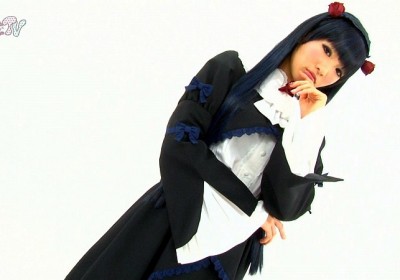
[Exclusive Program] Tokyo GIrls’ Update TV #006 : SBY in Shibuya109 & Pikarin’s Cosplay

8th Wave of Tokyo Idol Festival 2016 Performers Announced!!


